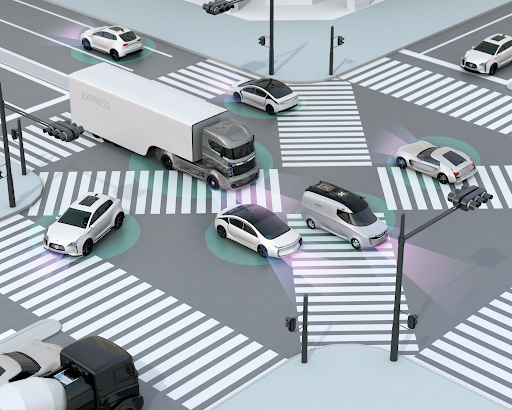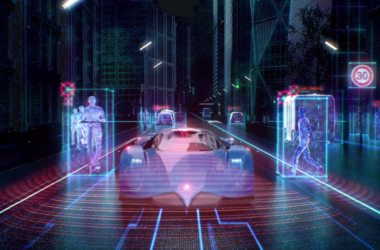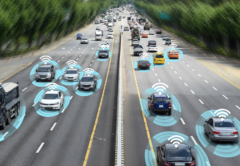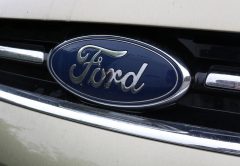This text was guest-authored by Giles Kirkland, car expert and all-round motoring enthusiast.
Entire fleets of autonomous vehicles may become commonplace, which gives birth to new possibilities of faster, cheaper and possibly safer transport. Unfortunately with new solutions come new challenges. Will, for example, self-driven trucks be safer? We hear a lot about accidents occurring with autonomous vehicles from companies such as Tesla, but would the cost of a few more accidents be worth a safer future?
Freight transport
Transport fleets of autonomous vehicles such as trucks could drive 24/7 on specially designed highway lanes, with no need for breaks and no risk of dangerous driving. They could be fully autonomous or have a human driver present in case of dangerous situations, signing paperwork or crossing borders etc.
Although prototypes of models of autonomous trucks from Mercedes Benz and American Freightliner exist, there are still no self driving fleets transporting thousands of tons of goods alone. However, robot arms and autonomous forklifts are quite common in modern warehouses. They load, unload and transport goods within the warehouse area, by connecting to one another creating flexible conveyor belts. These tasks require advanced sensors, as well as vision and geo guidance technology.
Within the next few decades, self-driving vehicles are going to have a supporting role in the automated logistics process. The technology will help drivers avoid potential dangers, by calculating the safest maneuvers in tough situations. This will drastically reduce the number of road accidents, but a complete machine overtake of logistics might take up to 50 years.
Ride sharing
The scale of road traffic causes huge problems such as traffic jams and lack of parking space. Because of this, more and more people in big cities opt for public transport, taxis, shared ride services or by-the-minute car rental. In London for example, only 54% of households now own a car, while the UK national average is 87%.
In large cities, fleets of shared autonomous cars could be the answer. They would serve city centres by reducing traffic, improving air quality and avoiding private car ownership (which, in case of autonomous vehicles, will still be blocked by their cost for many years to come).
If autonomous cars circulate on dedicated roads within cities and only interact with other autonomous vehicles, this would ensure that the technology is safe to hit the road down the line. As a replacement for taxis, however, it is unclear at which point autonomous vehicles with a 24/7 availability and lower accident risk will be ready to compete economically with human driven standard vehicles.
Maintaining fleets
Any company that decides to run a fleet of autonomous vehicles will have to take care of their maintenance, which would require staff halfway between mechanics and software engineers, as well as other supporting workshops. This would also possibly demand the vehicles to be able to self-diagnose in order to call in road service or maintenance workers whenever something happened.
Companies like Openfleet have already started designing ERP solutions for future fleets, to help owners organize the maintenance and recharge, track their localization or usage.

Costs
Currently, onboard electronics and safety systems such as GPS and LiDAR are costly technologies. They cost around 100k USD, and on top of the price of each car, many companies might not be able to afford fully autonomous cars for a long time to come.
Such expensive fleets may need to be financed which, on the other hand, creates new business opportunities. According to KPMG estimates, the benefit of self-driving vehicles can reach up to £51 billion per year. This will result in new career and investment opportunities for all potential investors involved in sectors such as transport, automotive, environment, manufacturing,logistics, operations and more. They will probably need to create new partnerships and alliances in order to develop new economically viable models.
Safety
Weymo hope that over time accidents in autonomous cars will be at least as rare as airplane crashes. But just like an airplane saving data in a black box, just one Weymo car generates 1Gb of data every second, and so much data could also be a potential target for security flaws. Cyber attacks could cause accidents, or track users for political, marketing or even worse purposes.
Insurance
Vehicle insurance is based on the idea that a human with a driving license is behind the wheel. Insurance is no more than assessing a risk, but software may drive better than a human. Companies like FOSS National are already designing insurance products that will allow owners of autonomous fleets to insure their vehicles and trucks, as it’s going to be hard to estimate the dangers when the driver does not have an age, bad driving habits or history of accidents.
As of today, autonomous cars are still a thing of the future, and self-driving fleets even more so. But if their challenges are , they will be an incredible change for the industry, and a major step in the evolution of transportation. From a business standpoint, it will create opportunities and risks as massive as the evolution of retail when the first supermarkets opened.
About the author:
Giles Kirkland is an environmentally conscious car expert with passion for combining the newest technologies with a healthy lifestyle. He gives sustainable living and driving tips and shares his ideas on everything from electric vehicles to the alternative energy sources. Giles’ articles are available at Oponeo and on Twitter.







